#gebirgsjager
Text

A German Panzer II Ausf. C tank crosses the Pineios river - Thessaly, Greece 1941 Note the Gebirgsjäger (mountain soldier) hitching a ride at the back
#world war two#1940s#worldwar2photos#history#ww2#wwii#ww2 history#wwii era#world war 2#ww2history#wehrmacht#panzer#thessaly#greece#pinieos river#1941#gebirgsjager
68 notes
·
View notes
Text
442-RCT's The Rescue of the Lost Battalion (Watanabe)
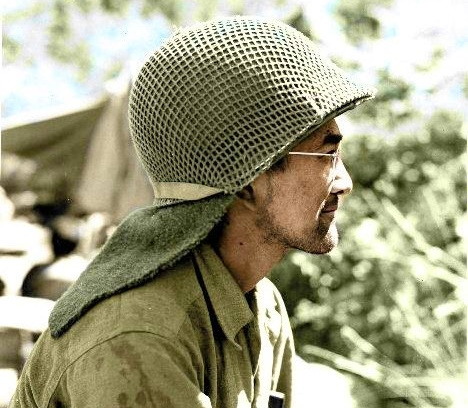
Document Source: A thesis presented to the Faculty of the US Army Command and General Staff College in partial fulfillment of the requirements for the degree Master of Military Art and Science, Military History, by Maj Nathan K. Watanabe, USA B.S., US Air Force Academy, Colorado, 1988, Fort Leavenworth, Kansas 2002
(Doc Snafu Final Check September 12, 2022)
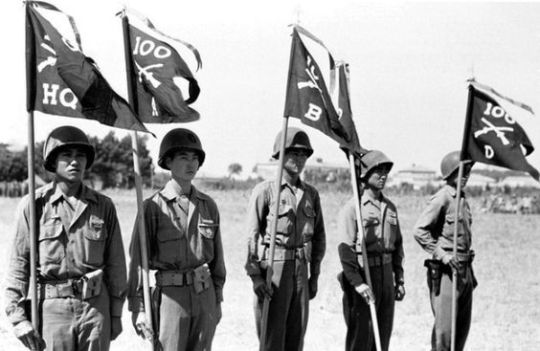
Introduction
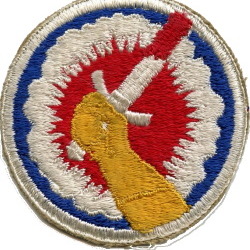

The 442nd Infantry Regiment, later 442nd Regimental Combat Team, was an infantry regiment of the United States Army and was the only infantry formation in the Army Reserve. The regiment is best known for its history as a fighting unit composed almost entirely of second-generation American soldiers of Japanese ancestry (Nisei) who fought in World War II. Beginning in 1944, the regiment fought primarily in the European Theatre, particularly in Italy, southern France, and Germany.
The story of the 442nd Regimental Combat Team (442-RCT) is rooted in the history of the Japanese in Hawaii and America itself. As the second generation of Japanese born abroad or the first Japanese generation born in Hawaii and America through the early 1910s and 1920s, the Nisei were American citizens and part of the larger greatest generation to be of the right age to face the conflict of World War II. This generation of Japanese born abroad best personifies the blending of American and Japanese cultures that laid the foundation for a resolute, cohesive, and dedicated unit that accomplished every assigned mission without fail.


The 442nd Regiment is the most decorated unit in the US military history. Created as the 442nd Regimental Combat Team when it was activated on February 1, 1943, the unit quickly grew to its fighting complement of 4000 men by April 1943, and an eventual total of about 14.000 men served overall. The unit earned more than 18.000 awards in less than two years, including 9.486 Purple Hearts and 4.000 Bronze Star Medals. The unit was awarded eight Presidential Unit Citations (five earned in one month). Twenty-one of its members were awarded Medals of Honor. In 2010, the Congressional Gold Medal was awarded to the 442nd Regimental Combat Team and associated units who served during World War II, and in 2012, all surviving members were made chevaliers of the French Légion d'Honneur for their actions contributing to the liberation of France and their heroic rescue of the Lost Battalion.


Arriving in the European Theatre, the 442nd Regimental Combat Team, with its three infantry battalions, one artillery battalion, and associated HQ and service companies were attached to the 34th Infantry Division. On 11 June 1944, near Civitavecchia, Italy, the existing 100th Infantry Battalion, another all-Nisei fighting unit that had already been in combat since September 1943, was transferred from the 133rd Infantry Regiment to the 442nd Regimental Combat Team. Because of its combat record, the 100th was allowed to keep its original designation, with the 442nd renaming its 1st Infantry Battalion as its 100th Infantry Battalion. The related 522nd Field Artillery Battalion liberated at least one of the satellite labor camps of Dachau concentration camp and saved survivors of a death march near Waakirchen.

The 442nd saw heavy combat during World War II and was not inactivated until 1946, only to be reactivated as a reserve unit in 1947 and garrisoned at Fort Shafter, Hawaii. The 442nd lives on through the 100th Battalion/442nd Infantry Regiment, which has maintained alignment with the active 25th Infantry Division since a reorganization in 1972.
This alignment has resulted in the 100th/442nd Infantry Regiment's mobilization for combat duty in the Vietnam War and the Iraq War, in which the unit was awarded the Meritorious Unit Commendation. With the 100th/442nd Infantry Regiment the last infantry unit in the Army Reserve, the 442nd's current members carry on the honors and traditions of the historical unit.
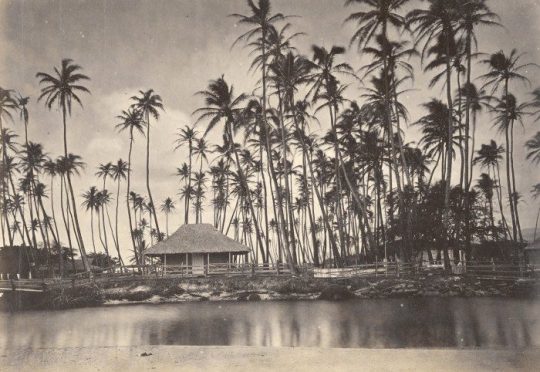
Last Voyage of the Inakawa-Maru - 1806
The first known arrival of Japanese to the Kingdom of Hawaii came on May 5, 1806, involving survivors of the ill-fated ship Inawaka-maru who had been adrift aboard their disabled ship for more than seventy days. The Inawaka-maru, a small cargo ship built in 1798 in Osaka, was owned by MansukeMotoya of Kitaniura, Hiroshima, and was chartered by the Kikkawa fiefdom in Iwakuni, a district in the present Yamaguchi prefecture, to transport floor mats and horse feed to the residence of the Kikkawalord in Edo (Tokyo today).
The trip began in November 1805. The ship was manned by Capt Niinaya Ginzo, thirty-three years old; Master Ichiko Sadagoro, fifty-three; and four sailors: Hirahara Zenmatsu, thirty-four; Akazaki Matsujiro, thirty-four; Yumori Kasoji, thirty-one, all from Kitaniura; and Wasazo, twenty-seven, from Higashinomura. The ship departed from Kitaniura, Hiroshima, on November 7, 1805, and took on its designated cargo together with two officials of the Kikkawa fiefdom at Iwakuni. Before leaving for Edo, however, the ship returned to Kitaniura and then headed for Edo on November 27, 1805. On December 21, 1805, the Inawaka-maru arrived in Shinagawa, a port in Edo. After unloading the cargo headed southward stopping at Kanagawa, Uraga, and Shimoda. On January 6, 1806, the vessel departed Shimoda for its final homebound voyage.

While crossing the Sea of Enshunada near the Shizuoka prefecture, the Inawaka-maru encountered a snowstorm backed by a strong east wind. The snowstorm turned into heavy rain, and the wind became stronger. The ship was soon disabled and was blown toward the Eastern Pacific. On January 7, 1806, due to the increased force of the wind, the crew cut the mast down, and the disabled ship began drifting further eastward. On January 11, two rocky islets were sighted, but a decision was made not to make a landing. The ship continued drifting eastward. The supply of water ran out on January 20. Except for relief during an occasional rainfall, the crew often went without water for four or five days. Rainwater was collected by every means possible. At times they had to quench their thirst by sucking on cloth that contained some moisture.
By February 28, the supplies of rice and water were nearly exhausted. The last dinner was cooked with the last little supply of rice. They all prepared for death, hoping that their ship would take them to their Buddhist paradise. On March 15, a flying fish jumped into the ship. Zenmatsu made a soup with it and shared it with the rest of the crew. They made hand-made hooks and used the innards of the flying fish to catch more fish. In this way, they were able to regain their strength. Some fish were saved by drying.
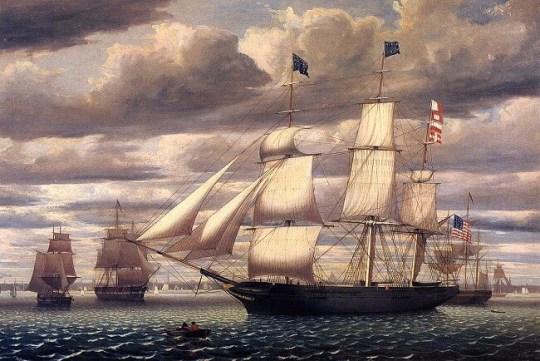
On March 20, 1806, a foreign ship appeared. The crew of the Inawaka-maru climbed onto the deckhouse roof and signaled the ship by waving a mat and shouting for help. At first, they seemed not to have been seen, but finally, the ship came closer and lowered her sails. Four foreigners, including one carrying a sword, who seemed to be the captain, came up on deck as the ship circled around the Inawaka-maru. Upon realizing that the Japanese vessel was disabled, they came aboard. Two sets of Japanese swords that belonged to the two officials from Iwakuni were found in a closet at the stern and were confiscated. The captain asked the Japanese something, but they could not understand English. The Japanese asked for food by putting their hands on their stomachs, pointing to their mouths, and bowing with their hands together. The captain touched each one's stomach and took a look around the galley. When he realized that they had no food or water, he took all eight Japanese on board his ship, assisting them by taking their hands and putting his arms around them. The personal belongings of the Japanese were also transferred. The rescuing ship was an American trading vessel, the Tabour, commanded by Captain Cornelius Sole. The Japanese had been rescued after being adrift in the Pacific for more than seventy days. Aboard the Tabour, the Japanese were served a large cup of tea with sugar.

It tasted so good that they asked for more, but the captain did not allow them to eat anything more on that day (remedy for starvation). On the following day, they were given two cups of sweetened tea followed by a serving of gruel. This was repeated for another three days. On the fifth day, when everyone gradually became well, they were served rice for breakfast and dinner and bread for lunch. The bread, tasted by the Japanese for the first time, was described by Zenmatsu as similar to a Japanese confection called Higashiyama, which is shaped round like a cross-section cut of thick daikon (radish). The Japanese had no words to express their gratitude and they were deeply touched by the kind treatment received from the foreigners.
On May 5, 1806, the Tabour arrived in Hawaii and docked in Oahu after forty-five days of sailing following the rescue. Zenmatsu reported being rescued by a foreign ship at 4000 RI (9760 miles) from Hawaii and 1000 RI (2440 miles) from Japan. He also stated that the distance between Japan and Hawaii is 5000 RI (12.200 miles). Zenmastu was considerably off in his distance estimation as the distance between Japan and Hawaii is 3800 miles. According to Zenmatsu, nearly five hundred men and women onlookers gathered around them when they disembarked from the ship.
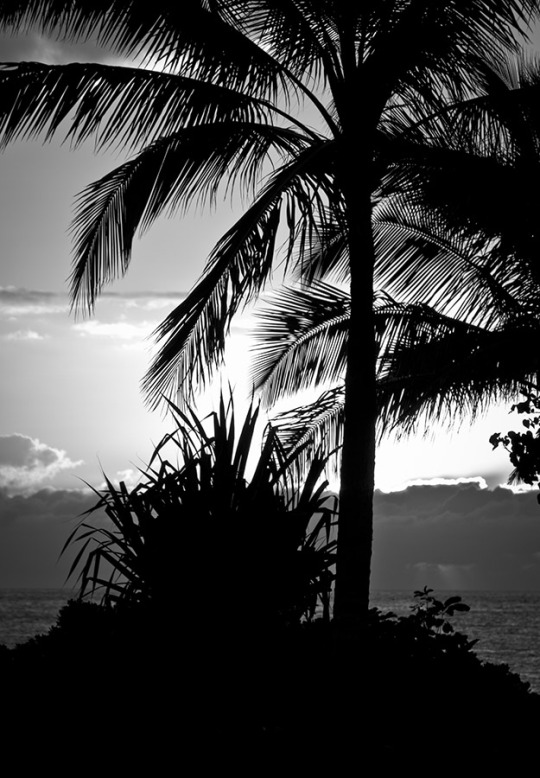
They camped outdoors on the night of their arrival. Steamed potatoes (sweet potato or taro) were brought to them the following day. On the second day after their arrival, Zenmatsu reported, the building of a house for the Japanese was started, probably on orders of the chief. More than fifty persons were engaged in cutting trees from the mountains and building a house with a thatched roof. Only four days after their arrival, the house was completed, and the eight Japanese moved in. People brought Kalo (taro) and Uala (sweet potatoes) in gourd containers while the house was being constructed. A fence was built around the house when the Japanese moved in to prevent others from entering, and a cook was assigned to prepare meals for them. Two Hawaiian guards were assigned since so many onlookers were gathering around the fence trying to look into the house. To satisfy the onlookers' curiosity, four Japanese in turn walked inside the fence and after a while, people started leaving, talking to each other. More and more onlookers arrived for almost two weeks, but their numbers gradually diminished to thirty to fifty a day.
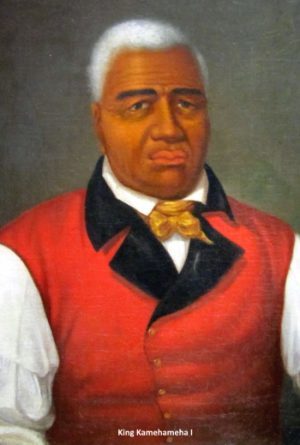
The Japanese remained in Hawaii for more than three months until an American ship offered to take them home. When the trading ship Perseverance, commanded by Captain Amasa Delano, arrived in Hawaii, Delano learned that Captain Sole had left the Japanese under the care of King Kamehameha I until another ship could take them back to Japan via China. Capt Sole left one of the anchors from the Japanese wreck, forty axes, and some other articles to compensate for their living in Hawaii. Sole also left a note describing the Japanese for anyone who could take them back to Japan.
Thus, Delano offered to take them as far as China so that they could find their way back home on another ship inasmuch as only Dutch and Chinese ships were allowed to enter Nagasaki, the only port then open to foreigners. On August 17, 1806, all eight Japanese left O'ahu with Delano aboard the Perseverance. Zenmatsu described the departure in personal terms: August 15, was a day for festivities for our home village shrine. Everyone felt so homesick, longing to return home. On that same day, an American trading ship, the Perseverance, about 2000 Goku (300 tons), with a crew of sixty-three, arrived in Hawaii for their provisions. Learning of our presence, they came to see us. Upon seeing a banner-like object that was left by the captain of the rescuing ship, and after talking among themselves, they urged us to board their ship.

Japanese Survivors Leave Oahu - 1806
The Hawaiians, old and young, who had become friendly to us during our stay, brought taro, sweet potatoes, beef, pork, and chicken to the ship and stayed around us, and one by one bade farewell to us. When the ship left Honolulu on August 17, about five hundred Hawaiians came out to the shore, waving their hands and shouting 'goodbye'. They stayed to see us off until the ship was out of sight. We were so deeply touched that we all could not hold back our tears. About 2000 RI (4880 miles) of sailing away from Hawaii, the Americans pointed to the north saying 'Japan! Japan!' We became excited, purified ourselves, and bowed toward the direction of Japan. When we begged the Americans to take us to Japan, they indicated 'no' by gesturing with signs signifying that we would be beheaded.
The Perseverance arrived in Macao on October 17, 1806. On December 25, the Japanese were sent to Jakarta, Java, on a Chinese ship. They were in Jakarta for more than four months and apparently contracted malaria and other tropical diseases.
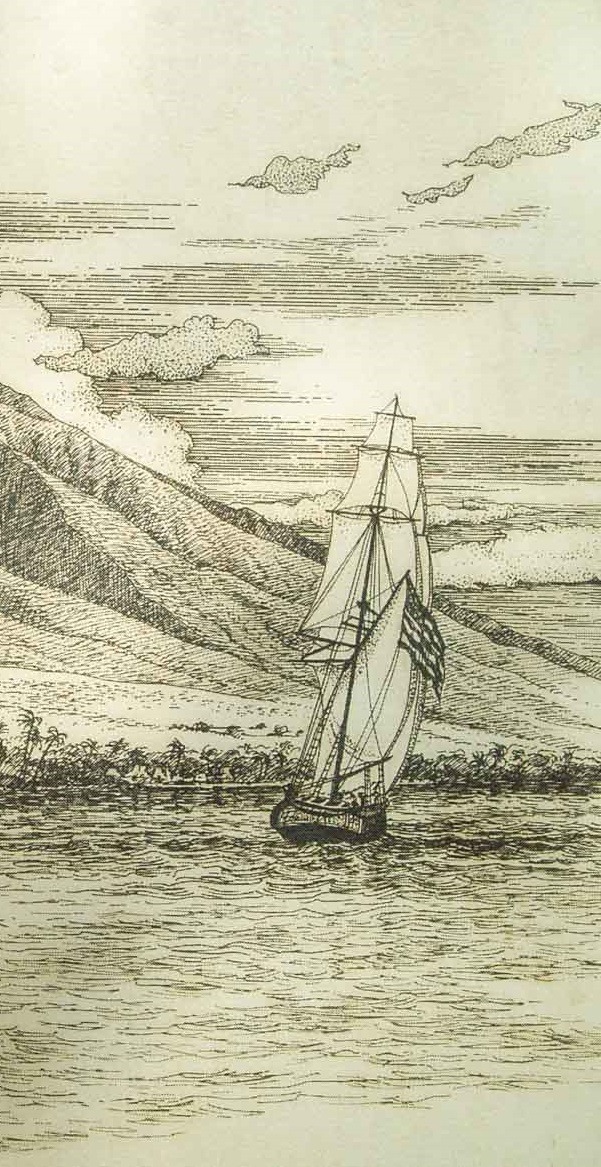
Thus, only three of the original eight finally reached Nagasaki on June 17, 1807, onboard an American ship flying a Dutch flag. All others died in Jakarta or on the ship. Unfortunately, one more died soon after returning to Nagasaki, and another committed suicide during the official interrogation there. Zenmatsu was jailed and underwent severe interrogation by officials as he had violated the Sakoku edict, which prohibited Japanese subjects from leaving the country. Zenmatsu was kept in Nagasaki for five more months before being allowed to return to his village on November 29, 1807. Soon after his return, he was summoned by Lord Asano of Aki to report on his overseas experiences. He died six months after his return.
The King delegated the responsibility for the Japanese to Kalanimoku who had 50 men construct a house on May 6 for the Japanese. It took four days to build and a cook and two guards were assigned to the house, which attracted crowds to these men of different ethnicity. On August 17, the Japanese left Hawaii aboard the Perseverance to Macau. From there they took a Chinese ship to Jakarta on December 25.
In Jakarta, they fell ill and five died there or on the voyage to Nagasaki where they arrived on June 17, 1807, and where another died. At the time of the Sakoku, it was illegal to leave Japan and the remaining two survivors were jailed and interrogated.
One committed suicide and the remaining survivor Hirahara Zenmatsu eventually made it home on November 29 1807 but was summoned by Asano Narikata, the Daimyō of Hiroshima, to recount his odyssey of an experience titled Iban Hyoryu Kikokuroku Zenmatsu. Hirahara Zenmatsu died six months later.

Gannenmono
In 1866, Eugene Miller Van Reed, a Dutch American, went to Japan as a representative of the Hawaiian Kingdom.
Read the full article
#133rdFieldArtilleryBattalion#16.VGD(German)#198.PB(German)#201.-Gebirgsjäger-Bataillon#202.-Gebirgsjager-Bataillon#232ndEngineerCombatBattalion#34thInfantryDivision#388.-Infanterie-Division#3rdInfantryDivision#442ndInfantryRegiment#442ndRegimentalCombatTeam#522ndFieldArtilleryBattalion#602.-Schnellabteilung#716.-VolksGrenadier-Division#92ndInfantryDivision#933.-Grenadiere-Regiment#AkijiYoshimura#AlamoRegiment#AmericansofJapaneseAncestry#Anzio(Italy)#ArdantduPicq#ArmyHawaiianDepartment#ArnoRiver#AsanoNarikata#BelfortGap#Belmont#Belvedère#BenjaminHarrison#Biffontaine#Bologna
0 notes
Photo

German Gebirgsjager inspecting a T-34 in vicinity of Jazów Stary
10 notes
·
View notes
Text
Best Absolute Zero Reactive Mastercraft - Vanguard & Warzone Showcase
Best Absolute Zero Reactive Mastercraft – Vanguard & Warzone Showcase
Absolute Zero reactive Mastercraft – Vanguard & Warzone Showcase
Season 2 Reloaded
Sub-Kelvin Submachine Gun PPSH
Permafrost Assault Rifle
Nachtmahr Watch
Trophy Case Charm
Trudging Through Sticker
Gebirgsjager Sticker
Snow Slide Calling Card
Ski Season Emblem
Ski Season Emblem
Wintry Mix Killcam Theme
#warzone #vanguard #season2reloaded
source
View On WordPress
0 notes
Photo


Gebirgsjäger postcards.
#gebirgsjager#gebirgsjaeger#mountain infantry#history#world war 2#germany#nazi germany#third reich#vintage postcards#edelweiss
31 notes
·
View notes
Photo


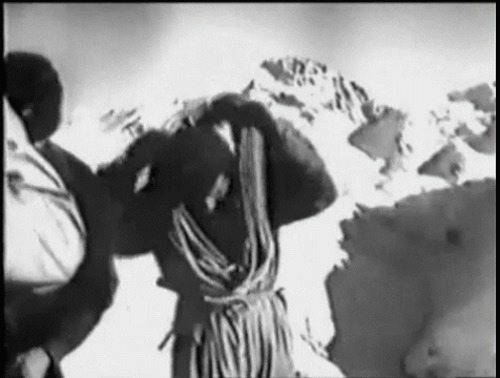





Winter training in the Alps (Dec.1944)
112 notes
·
View notes
Text
HEROES IN GOOD COMPANY: L Company, 86th Regiment, 10th Mountain Division 1943-1945
HEROES IN GOOD COMPANY: L Company, 86th Regiment, 10th Mountain Division 1943-1945
A new book, HEROES IN GOOD COMPANY: L Company, 86th Regiment, 10th Mountain Division 1943-1945, released on April 11, 2022 is now available on amazon and in select bookstores.
L Company of the 86th Mountain Infantry Regiment went into action with 185 men, and sustained 156 casualties in just two months of fierce combat with German forces. Heroes in Good Company turns interviews, letters,…
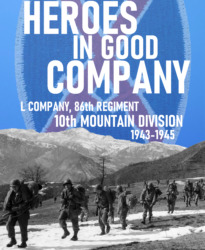
View On WordPress
#10th Mountain Division#1945#book#dukw#gebirgsjager#Gothic Line#history#Italy#lake garda#memoir#military#naples#non-fiction#rome#second world war#Ski Troops#verona#war#World War Two#ww2#WWII
1 note
·
View note
Photo

Gebirgsjäger troops in the wood NO POLITICAL PURPOSES #feldgragruppe #ww2reenactment #ww2 #reenactment #gebirgsjager #wood #fight #ostfront
9 notes
·
View notes
Text
Hitler’s Mountain Troops 1939-1945: The Gebirgsjager (Images of War)
Hitler’s Mountain Troops 1939-1945: The Gebirgsjager (Images of War)
Фотоальбом элитных немецких горных стрелков, книга 2011 года. Без перевода, в PDF. Много интересных фотографий для референса. Ссылка под катом. (more…)
View On WordPress
0 notes
Photo

Gefreiter (cabo segundo) del 231° Batallón de la 23.ª Brigada de Tiradores Alpinos (Gebirgsjäger) luciendo en su gorra sobre la izquierda la insignia que identifica a las tropas alpinas el Edelweiss. Más del 80% de los tiradores alpinos son voluntarios, en su mayoría nativos del sur de Baviera y otroas zonas aledañas a los alpes.Actualmente diferencia del resto de la Bundeswehr, los Gebirgsjäger (así como tropas aerotransportadas) guardan celosamente sus tradiciones marciales. En la actualidad la 23.ª Brigada de Tiradores Alpinos con sede en Bad Reichenhall (cerca de la frontera Austriaca)- es la única formación del ejército alemán, preparada para la acción en alta montaña. Esta brigada, junto con la 22.ª Brigada motorizada y la 24.ª Brigada Blindada, son parte de la 1.ª División de Tiradores Alpinos. Durante la Segunda Guerra, bien entrenados y compuestos por soldados seleccionados, la 23.ª Brigada podia ser considerada como una unidad militar de élite. Está armado con una ametralladora alemana MG-3. Un traje de camuflaje blanco, adoptado por las tropas alpinas, que se viste sobre el mono de camuflaje regular. En invierno, todas las compañías del batallón se someten a entrenamiento alpino. Se supone que las tropas alpinas como formación de élite formarán parte de las fuerzas de reacción rápidas creadas en Alemania. Las tropas de tiradores alpinos (montaña-Gebirgsjager) fueron creadas durante la Primera Guerra Mundial cuando Alemania decide apoyar a su aliada Austria en el frente italiano y formó unidades especializadas. . Durante la Segunda Guerra Mundial, los tiradores alpinos se consideraban ya como una formación de élite y utilizados en las batallas donde se requerían sus habilidades especiales de escalada. Pasaron por toda la guerra y actuaron en todos los frentes: Desde Noruega a los Balcanes y especialmente en Rusia. Cuando en 1939, año en que comenzó la invasión de Polonia, las 1.ª, 2.ª y 3.ª divisiones de Gebirgsjager barrieron desde los flancos a las tropas polacas, y después de esto, las divisiones 2 y 3 se redistribuyeron en Noruega para evitar que los aliados desembarquen en Narvik. Por sus acciones decisivas ellos rápidamente inclinaron la balanza a favor de Alemania. Formados en 1941, la quinta y sexta división de los Gebirgsjäger fuerón destinadas a la invasión de los Balcanes y Grecia. Después de capitulacion del ejército griego, los Gebirgsjäger toman parte en el asalto aéreo a Creta, defendido por unidades aliadas seleccionadas que confirmaran su reputación ganada. Los Gebirgsjäger luchan como leones y se volvieron inestimables, asistiendo a los paracaidistas alemanes quienes sufrieron grandes pérdidas en esta operación. Cuando en 1941, Hitler lanzó su guerra contra Rusia, las divisiones de Gebirgsjäger participaron en la operación. "Barbarroja". En las primeras etapas de la invasión las 1.ª y 4. divisiones irrumpieron en el Cáucaso y plantaron su bandera encima del monte Ebro. Cuando los eventos en Rusia toman un giro ligeramente diferente, los Gebirgsjäger fueron obligados a retirarse a las fronteras del Reich. Dentro de unos meses la 1º, 4º, 6º y la 7ª División defenderan Odessa. De 1941 a 1945 se utilizaron Gebirgsjäger en Finlandia y Noruega para retardar los avances de las tropas rusas. https://ift.tt/2Dupd0K
5 notes
·
View notes
Text
I have a question about the Gebirgsjager from Warlord Games: it says they can be used in the Early War phase (1939 - 1940), so I’m just wondering whether I can use them in a game of 1938: A Very British Civil set in 1939?
3 notes
·
View notes
Text
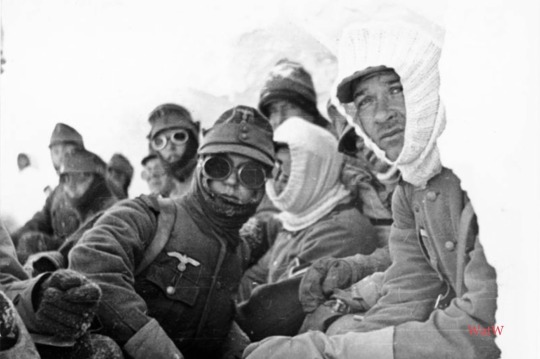
German Gebirgsjäger (Mountain Troops) take cover whilst awaiting orders during the Battle of Norway - Narvik 1940
#world war two#1940s#worldwar2photos#history#ww2#wwii#ww2 history#wwii era#world war 2#ww2history#wehrmacht#gebirgsjager#mountain division#1940#narvik#norway#invasion of norway
37 notes
·
View notes
Photo
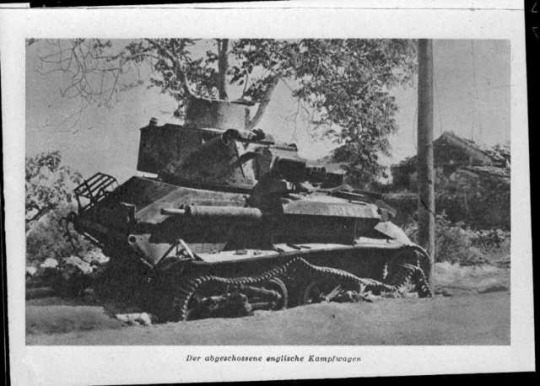
Wrecked World War 2 British tank, in Crete. Photographer unidentified.
This is a copy of an image in the book Gebirgsjager auf Kreta - Mountain Troops on Crete, prepared by Sepp Dobiasch, by Major Flecker, published by Wilhelm Limpert-Verlag, Berlin. Page 110.
8 notes
·
View notes
Photo

New Gebirgsjager feldbluse acquired used. Original maker is Hessen Antique, litzen are done improperly, which is fine, and overall feels quite nice. I’d estimate it’s for the 2nd Gebirgsjager Division simply due to it being the Model 1936, it’s also an NCO’s model due to the tresse, showcasing as an unteroffizier due to the tresse not fully-enclosing the shoulderboards. Stay tuned for the upcoming coatee that isn’t German.
0 notes
Photo

Poster from III Battalion Gebirgsjäger Regiment 100 “Bad Reichenhall”.
“We are the lords of this world, and it is rich with rock and ice!”
42 notes
·
View notes
